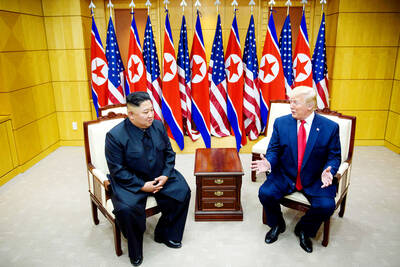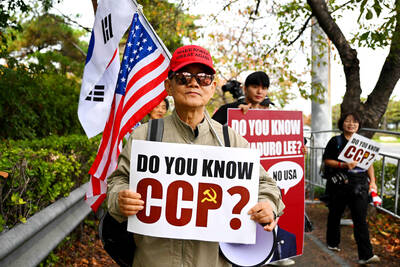Colombia’s military has shown for the first time a video detailing a daring rescue operation that set free 15 rebel-held hostages, including former Colombian presidential candidate Ingrid Betancourt.
The images, unveiled on Friday, showed the captives angry and resigned at having their hands bound, and then minutes later sobbing with jubilation aboard a helicopter upon discovering they had been freed.
The video of Revolutionary Armed Forces of Colombia (FARC) rebels benignly handing over 15 hostages to disguised Colombian commandos was released to counter questions about the military’s dramatic and bloodless coup, Colombian Defense Minister Juan Manuel Santos said.
“This is absolutely false,” Santos told reporters, when asked about reports that US$20 million dollars had been paid as ransom and that it was all arranged in advance with a rebel in charge of the hostages.
The 15 hostages, including French-Colombian Betancourt and three US defense contractors, were rescued on Wednesday after Colombian soldiers disguised as rebels arrived at a jungle hideout of the FARC and tricked the guerrillas into handing them over, ostensibly to be transferred to another rebel site.
The video shows a small team of unarmed, disguised Colombian commandos landing in a field of coca bushes in Guaviare department in southeast Colombia, where they were met by a group of FARC rebels, mostly women, escorting the 15 hostages.
It then shows them binding the hands of the hostages with plastic cuffs.
One hostage, a Colombian soldier, believing the cameraman was a real journalist, angrily complained about his 10 years in captivity.
Once aboard the disguised military helicopter, the video showed Betancourt and others reacting in surprise and breaking out in tears after the cuffs were removed and the soldiers revealed themselves.
Earlier on Friday the Swiss radio station Radio Suisse Romande reported that the bloodless release of the captives was obtained by paying US$20 million to the FARC.
The hostages “were in reality ransomed for a high price, and the whole operation afterwards was a set-up,” the radio’s French-language channel said.
In Colombia, reports said that, far from being a ruse, the handover was prearranged with a payoff through the lover of a turncoat FARC leader.
Colombian Army chief General Mario Montoya denied in the press conference that any money was paid in the rescue.
“We have not paid one single cent, much less US$20 million. That would have been cheap,” he said, according to a CNN translation.
“Because we had offered US$100 million. If they would have just handed over the hostages, there wouldn’t have been any mission,” he said.
Santos and Montoya said the video was taken by a Colombian soldier posing as a journalist accompanying the supposed transfer operation.
They said he was there to distract FARC leaders on the ground by interviewing them.

US President Donald Trump may have hoped for an impromptu talk with his old friend Kim Jong-un during a recent trip to Asia, but analysts say the increasingly emboldened North Korean despot had few good reasons to join the photo-op. Trump sent repeated overtures to Kim during his barnstorming tour of Asia, saying he was “100 percent” open to a meeting and even bucking decades of US policy by conceding that North Korea was “sort of a nuclear power.” But Pyongyang kept mum on the invitation, instead firing off missiles and sending its foreign minister to Russia and Belarus, with whom it

Many people noticed the flood of pro-China propaganda across a number of venues in recent weeks that looks like a coordinated assault on US Taiwan policy. It does look like an effort intended to influence the US before the meeting between US President Donald Trump and Chinese dictator Xi Jinping (習近平) over the weekend. Jennifer Kavanagh’s piece in the New York Times in September appears to be the opening strike of the current campaign. She followed up last week in the Lowy Interpreter, blaming the US for causing the PRC to escalate in the Philippines and Taiwan, saying that as

When Taiwan was battered by storms this summer, the only crumb of comfort I could take was knowing that some advice I’d drafted several weeks earlier had been correct. Regarding the Southern Cross-Island Highway (南橫公路), a spectacular high-elevation route connecting Taiwan’s southwest with the country’s southeast, I’d written: “The precarious existence of this road cannot be overstated; those hoping to drive or ride all the way across should have a backup plan.” As this article was going to press, the middle section of the highway, between Meishankou (梅山口) in Kaohsiung and Siangyang (向陽) in Taitung County, was still closed to outsiders

The Chinese Communist Party (CCP) has a dystopian, radical and dangerous conception of itself. Few are aware of this very fundamental difference between how they view power and how the rest of the world does. Even those of us who have lived in China sometimes fall back into the trap of viewing it through the lens of the power relationships common throughout the rest of the world, instead of understanding the CCP as it conceives of itself. Broadly speaking, the concepts of the people, race, culture, civilization, nation, government and religion are separate, though often overlapping and intertwined. A government